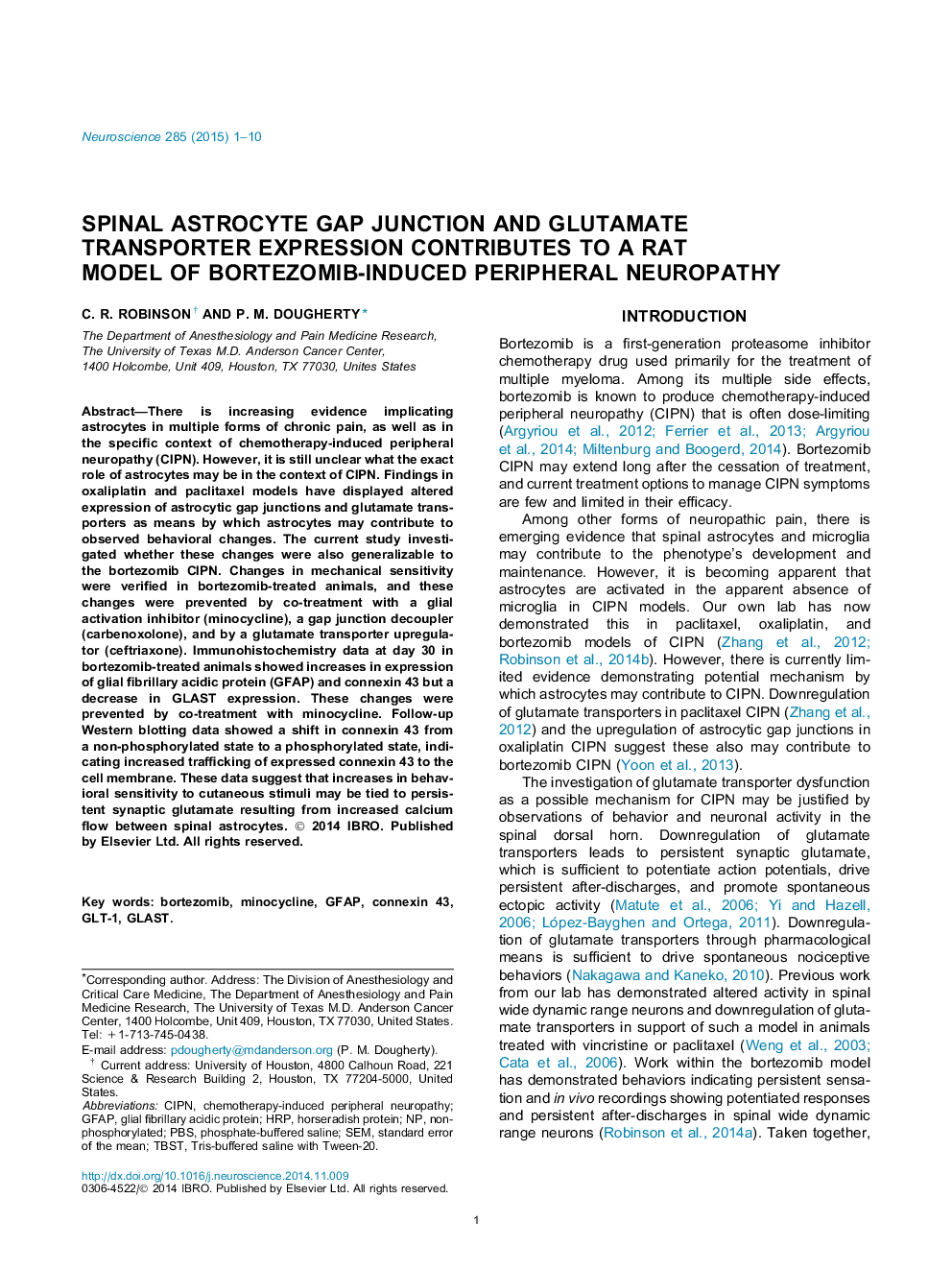| کد مقاله | کد نشریه | سال انتشار | مقاله انگلیسی | نسخه تمام متن |
|---|---|---|---|---|
| 6273201 | 1614791 | 2015 | 10 صفحه PDF | دانلود رایگان |
- Bortezomib hyperalgesia is prevented by minocycline, carbenoxolone, and ceftriaxone.
- Spinal GFAP expression is increased in rats with bortezomib hyperalgesia.
- Spinal connexin 43 expression is increased in rats with bortezomib hyperalgesia.
- Spinal GLAST expression is decreased in rats with bortezomib hyperalgesia.
There is increasing evidence implicating astrocytes in multiple forms of chronic pain, as well as in the specific context of chemotherapy-induced peripheral neuropathy (CIPN). However, it is still unclear what the exact role of astrocytes may be in the context of CIPN. Findings in oxaliplatin and paclitaxel models have displayed altered expression of astrocytic gap junctions and glutamate transporters as means by which astrocytes may contribute to observed behavioral changes. The current study investigated whether these changes were also generalizable to the bortezomib CIPN. Changes in mechanical sensitivity were verified in bortezomib-treated animals, and these changes were prevented by co-treatment with a glial activation inhibitor (minocycline), a gap junction decoupler (carbenoxolone), and by a glutamate transporter upregulator (ceftriaxone). Immunohistochemistry data at day 30 in bortezomib-treated animals showed increases in expression of glial fibrillary acidic protein (GFAP) and connexin 43 but a decrease in GLAST expression. These changes were prevented by co-treatment with minocycline. Follow-up Western blotting data showed a shift in connexin 43 from a non-phosphorylated state to a phosphorylated state, indicating increased trafficking of expressed connexin 43 to the cell membrane. These data suggest that increases in behavioral sensitivity to cutaneous stimuli may be tied to persistent synaptic glutamate resulting from increased calcium flow between spinal astrocytes.
Journal: Neuroscience - Volume 285, 29 January 2015, Pages 1-10
